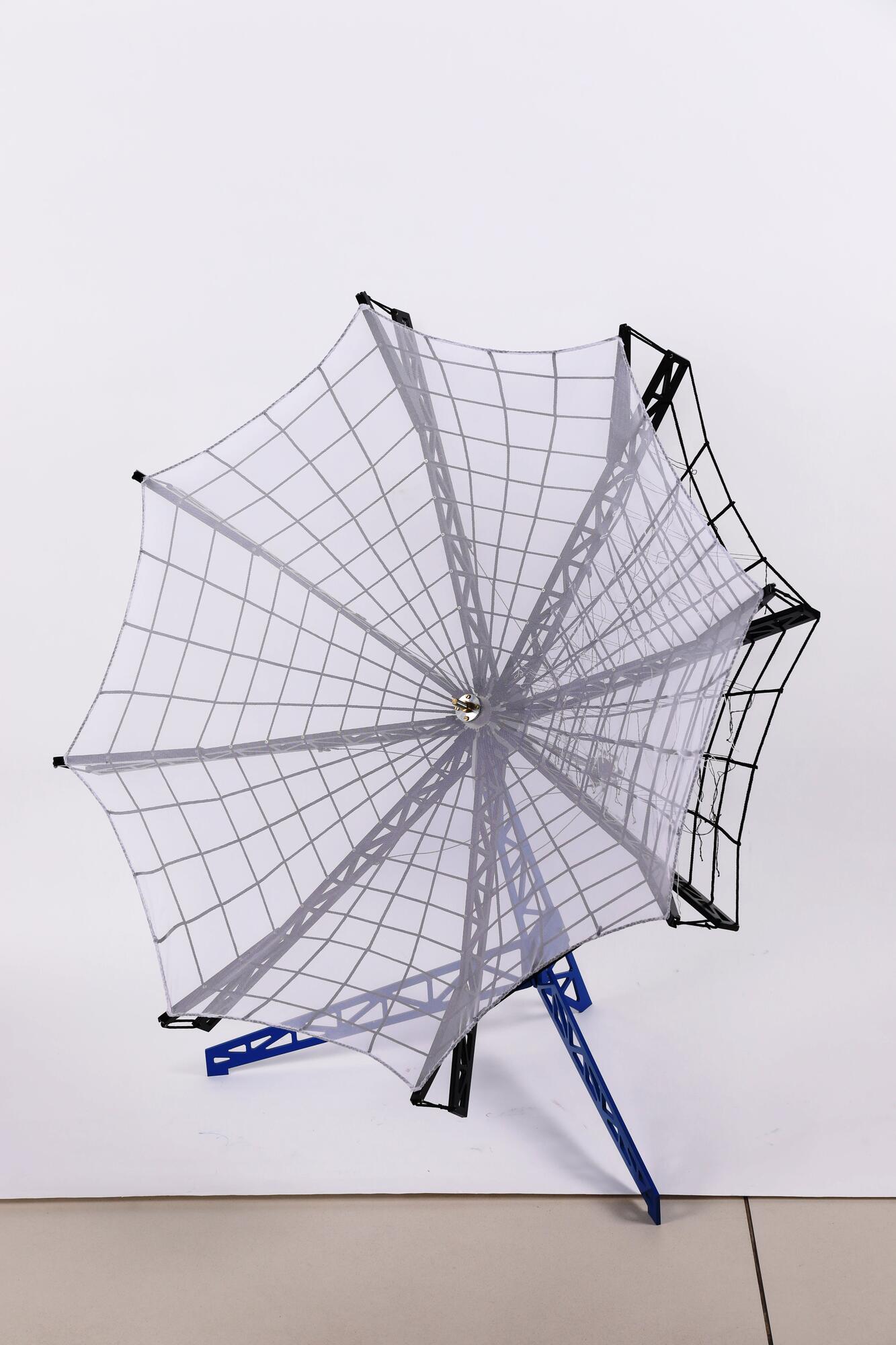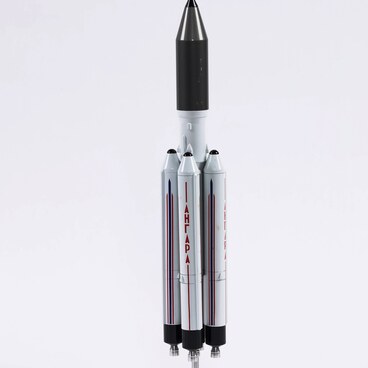Reflectors — concave bowl-shaped mirrors — are used in several types of antenna. They are widely used in space technology, especially on telecommunications and relay satellites. As the size of satellites, and that of their separate components, is limited by the payload that can be carried by booster rockets, transforming satellites (consisting of reflectors, solar panels and antennae) are often used. During launch these satellites are compact, and fit in the rocket head. After entering orbit the satellite opens its solar panels and its reflectors, attached to large antennas, and enters into operational mode.
There are several types of transforming antennas, each opening in a different way: umbrella, rimmed, inflatable and lattice antennas. The body of a transforming reflector consists of rigid radial ribs or telescopic tubular spokes, attached to a rigid central hub. This frame supports a reflective surface — an elastic sheet made of a metal mesh that reflects radio waves. The load-bearing parts — the ribs and struts of the reflector, are made of strong light materials, normally carbon-epoxy. The reflective surface is made of a woven metal mesh or a polymer film combined with a layer of metal. The mesh is woven from very fine tungsten or molybdenum fibers with a diameter of a few micrometers, with a gold coating that reflects radio waves.
Work on the creation of large transforming structures was under way in the 1980s, but they only started to be extensively used in the construction of space technology at the beginning of the XXI Century, as a result of the increasing demand for telecommunications services and the growing importance of telecommunications satellites. Large transforming reflectors are currently installed on the Russian Luch-5 relay satellites. These satellites are fitted with two antennas 4.2 meters in diameter, one operating on the S and the other on the Ku waveband.
This model of a large self-expanding satellite reflector was donated to the museum, along with several other exhibits, by the manufacturer in 2017, especially to mark the opening of the Children’s Space Center in Kirov.
There are several types of transforming antennas, each opening in a different way: umbrella, rimmed, inflatable and lattice antennas. The body of a transforming reflector consists of rigid radial ribs or telescopic tubular spokes, attached to a rigid central hub. This frame supports a reflective surface — an elastic sheet made of a metal mesh that reflects radio waves. The load-bearing parts — the ribs and struts of the reflector, are made of strong light materials, normally carbon-epoxy. The reflective surface is made of a woven metal mesh or a polymer film combined with a layer of metal. The mesh is woven from very fine tungsten or molybdenum fibers with a diameter of a few micrometers, with a gold coating that reflects radio waves.
Work on the creation of large transforming structures was under way in the 1980s, but they only started to be extensively used in the construction of space technology at the beginning of the XXI Century, as a result of the increasing demand for telecommunications services and the growing importance of telecommunications satellites. Large transforming reflectors are currently installed on the Russian Luch-5 relay satellites. These satellites are fitted with two antennas 4.2 meters in diameter, one operating on the S and the other on the Ku waveband.
This model of a large self-expanding satellite reflector was donated to the museum, along with several other exhibits, by the manufacturer in 2017, especially to mark the opening of the Children’s Space Center in Kirov.



